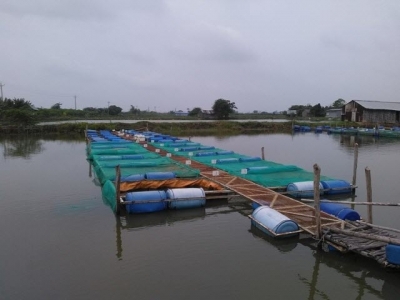Sorghum could substitute cassava as starch source for feeding Pangasius in Vietnam

Sorghum may offer a replacement feed ingredient for Pangasius aquafeeds currently using cassava, says the US Grains Council.
The Pangasius catfish feeding trials were organized by the US Grains Council (USCG), with support from the United Sorghum Checkoff Program, the Council said. They were conducted in Vietnam.
The group has worked closely with the US Grains Council on several projects to expand the use and market for the feed ingredient, said Florentine Lopez, executive director of the United Sorghum Checkoff in an earlier interview with us. The efforts included the feeding trials.
“We have done a feeding trial with the US Grains Council support in Vietnam looking at potential use in the aquaculture industry,” he told us. “We were able to conduct a trial and give [producers] confidence whether it’s a feeding trial, a food trial or how best to utilize the grain, and hopefully that comes back and benefits the market place here.”
The trial examined use of a sorghum-based diet when compared to one formulated with cassava and one using corn, said the USCG in its report on the project.
The effort found that the sorghum diet was equally palatable to the fish and that it supported production similar to a cassava diet, said report authors.
“At a 20% inclusion rate in Pangasius diets, sorghum was not proved to affect growth performance, fillet color and the physical properties of the feed pellets (density and floatability),” they said. “Similar to that of sorghum, feeding 10% corn in the diet of Pangasius resulted in the same performance as feeding cassava and sorghum. Both grains, sorghum and corn can be used for feeding catfish.”
Market expansion
One goal of the project is to establish additional market space for sorghum producers, and help develop or expand markets where the grain will fit, said Lopez.
“Our goal, more than anything, is to try to help support the marketplace for sorghum,” he said. “Our producers are extremely important to us.”
The project is part of an ongoing plan looking at spaces in countries including China, Columbia, Vietnam and Mexico, and seeking to offer information and generate new opportunities, he said. “These go a long way in providing that opportunity back to the producer,” he added.
In addition to offering an expanding market for sorghum producers, offering a replacement feed grain for aquaculture producers may help reduce feed costs, said the USCG.
In 2014, Vietnam produced about 1.2m tons of catfish, which required about 2.4m tons of feed, the council said. Most feed includes soybean meal, fishmeal, cassava, rice ran, wheat bran and oil and needs enough starch to be able to float when extruded as pellets.
The country generates about 7m tons of cassava and the amount has not increased in the last five years, the council said. However, demand continues to increase, especially for use in catfish and swine feed, which is raising the price.
“Vietnam may start to look for alternatives to replace cassava in feeding catfish, with sorghum as a viable alternative,” the report authors said. Sorghum offers an alternative starchy ingredient as it does not contain xanthophyll, is low in tannins, and has a higher protein content than cassava.
Feeding trial details
In the feeding trial, 2,160 catfish fingerlings were offered one of the three diets, the report authors said. The diets included cassava at 15%, sorghum at 20% and corn at 10% inclusion and were formulated to offer 29% protein and similar amino acid profiles.
Fish were given the feeds for 120 days, they said. Fish were weighed on days 75 and 120 and residual feed was measured.
Fish mortality and feed consumption was noted daily and feed conversion ratios were calculated, they said. Sorghum, corn and trial diet samples also were analyzed.
Project results
There were no changes in intake or fish mortality from any of the diets, the report authors said. Fish fillet color also was similar for the different feeds.
“There is no statistical differences among the dietary treatments to feed intake, body weight gain, feed/gain ratio and mortality,” they said.
Fish body weight was found to be similar, with weights ranging from 149.6g on cassava, 140.4g for sorghum and 142.8g for corn, they said. The feed to gain ratios were 1.35, 1.41 and 1.40 respectively.
The feeds generated also were found to have similar density and floatability attributes, they said. Ingredient analysis identified that sorghum offers a higher protein content, lower fat content and slightly lower starch amount than corn.
Có thể bạn quan tâm
 Optimal tryptophan levels boost tilapia weight gain, amino acid uptake
Optimal tryptophan levels boost tilapia weight gain, amino acid uptake Boosting dietary tryptophan amounts also bumps weight gain, amino acid retention for Nile tilapia eating corn-soy diet, say researchers.
 Some mycotoxin mitigations may be less effective in fishfeed
Some mycotoxin mitigations may be less effective in fishfeed Some types of feed additives developed to mitigate mycotoxins in feed for warm-blooded animals may be ineffective for fish, says new research.
 Increasing dietary carbohydrates may support fish growth with less dietary protein
Increasing dietary carbohydrates may support fish growth with less dietary protein Farmed juvenile tambaqui diets can swap some protein for carbohydrates and maintain fish growth, production performance, say researchers.